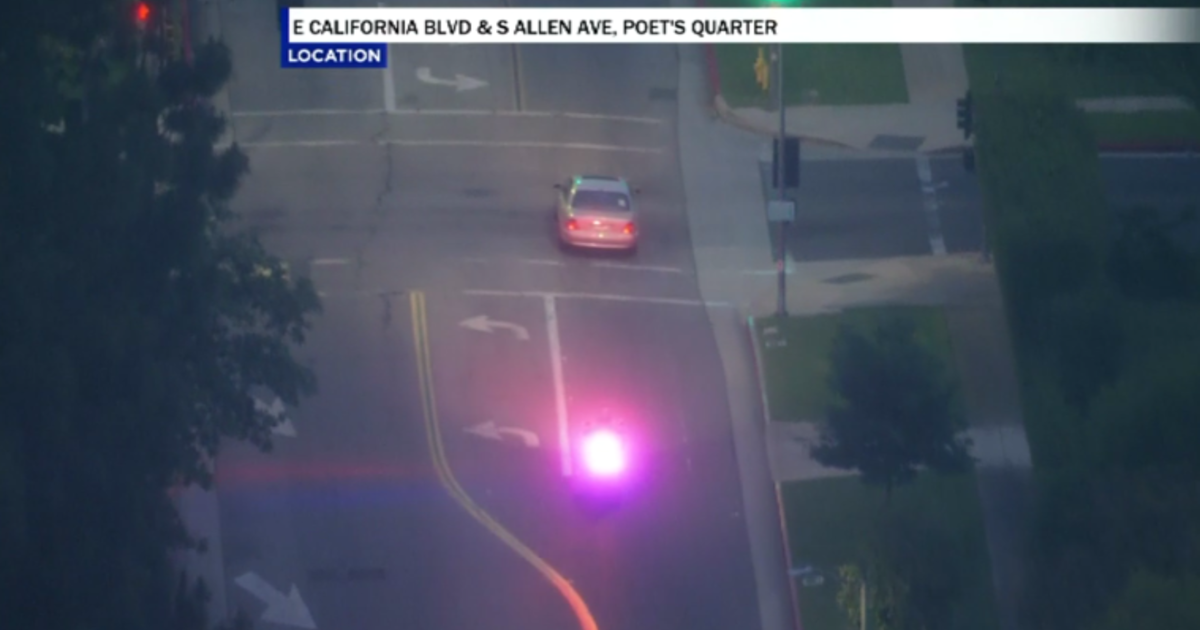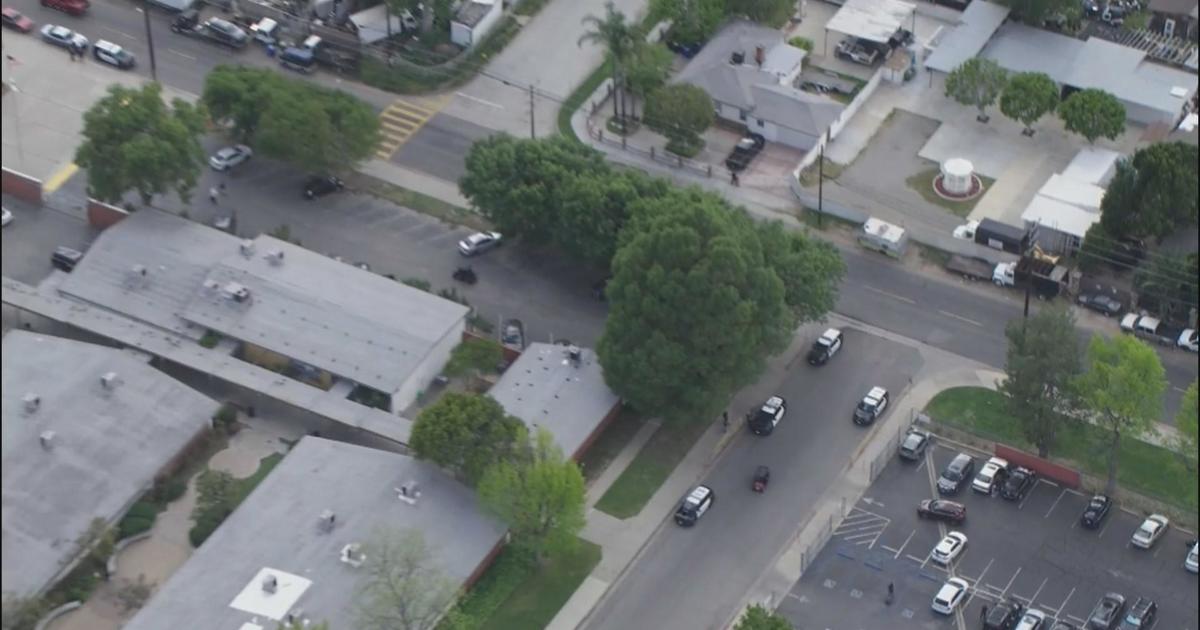Trump Tweets Approval Of Disaster Declaration For Wildfire-Ravaged California, Days After Threatening To Withhold Federal Funds
LOS ANGELES (CBS/AP) — President Trump says he has "approved an expedited request for a major disaster declaration" in California, days after threatening to withhold federal payments to the state as it battled multiple deadly wildfires.
RELATED: Firefighter Union President Rips Trump For 'Demeaning' Comments About California Wildfires
In the tweet, published Monday at 5:19 p.m. local time, the president stated: "I just approved an expedited request for a Major Disaster Declaration for the State of California. Wanted to respond quickly in order to alleviate some of the incredible suffering going on. I am with you all the way. God Bless all of the victims and families affected."
The message was posted two days after the president blamed "gross mismanagement of the forests" for the the deadly wildfires ripping through Northern and Southern California.
"Remedy now, or no more Fed payments!" the tweet continued in part.
The death toll from the wildfire that incinerated the Northern California town of Paradise and surrounding areas meanwhile climbed to 29 Monday, matching the mark for the deadliest single blaze in California history. Statewide, the number of fire dead stood at 31, including two victims in Southern California, where the Woolsey Fire burned through shrub land, not forest, according to University of Utah fire scientist Philip Dennison.
RELATED: California Wildfires: Trump Threatens To Withhold Federal Payments
Multiple reasons explain the fires' severity, but "forest management wasn't one of them," Dennison stated.
That sentiment was echoed by the California Professional Firefighters, Brian K. Rice, who called Trump's earlier comments "dangerously wrong."
"The president's message attacking California and threatening to withhold aid to the victims of the cataclysmic fires is ill-informed, ill-timed and demeaning to those who are suffering as well as the men and women on the front lines," Rice said in a statement.
He added, "Moreover, nearly 60 percent of California forests are under federal management, and another two-thirds under private control. It is the federal government that has chosen to divert resources away from forest management, not California."
The dean of the University of Michigan's environmental school, Jonathan Overpeck, said Western fires are getting bigger and more severe. He said it "is much less due to bad management and is instead the result of our baking of our forests, woodlands and grasslands with ever-worsening climate change."
Wildfires have become more devastating because of the extreme weather swings from global warming, fire scientists said. The average number of U.S. acres burned by wildfires has doubled over the level from 30 years ago.
As of Monday, more than 13,200 square miles (34,200 square kilometers) have burned. That's more than a third higher than the 10-year average.
RELATED: State Regulators Investigating Whether SoCal Edison Equipment Linked To Woolsey Fire
From 1983 to 1999, the United States didn't reach 10,000 square miles burned annually. Since then, 11 of 19 years have had more than 10,000 square miles burned, including this year. In 2006, 2015 and 2017, more than 15,000 square miles burned.
The two fires now burning "aren't that far out of line with the fires we've seen in these areas in recent decades," Dennison said.
"The biggest factor was wind," he continued in an email. "With wind speeds as high as they were, there was nothing firefighters could do to stop the advance of the fires."
These winds, called Santa Ana winds, and the unique geography of high mountains and deep valleys act like chimneys, fortifying the fires, said wildfire expert Kristen Thornicke of the Potsdam Institute for Climate Impact Research in Germany.
RELATED: Woolsey And Hill Fires: Evacuations, Road Closures And School Closures
The wind is so strong that fire breaks — areas where trees and brush have been cleared or intentionally burned to deprive the advancing flames of fuel — won't work. One of the fires jumped over eight lanes of freeway, about 140 feet (43 meters), Dennison added.
Southern California had fires similar to the Woolsey fire in 1982, when winds were 60 mph, but "the difference between 1982 and today is a much higher population in these areas. Many more people were threatened and had to evacuated," Dennison said.
California also has been in drought for all but a few years of the 21st century and is now experiencing its longest drought, which began on Dec. 27, 2011, and has lasted 358 weeks, according to the U.S. Drought Monitor . Nearly two-thirds of the state is abnormally dry.
The first nine months of the year have been fourth-warmest on record for California, and this past summer was the second-hottest on record in the state.
Because of that, there are 129 million dead trees, which provide fuel for fires, Thornicke said.
And it's more than trees. Dead shrubs around the bottom of trees provide what is called "ladder fuel," offering a path for fire to climb from the ground to the treetops and intensifying the conflagration by a factor of 10 to 100, said Kevin Ryan, a fire consultant and former fire scientist at the U.S. Forest Service.
While many conservatives advocate cutting down more trees to prevent fires, no one makes money by cutting dead shrubs, and that's a problem, he said.
Local and state officials have cleared some Southern California shrub, enough for normal weather and winds. But that's not enough for this type of extreme drought, said Ryan, also a former firefighter.
University of Alberta fire scientist Mike Flanigan earlier this year told The Associated Press that the hotter and drier the weather, the easier it is for fires to start, spread and burn more intensely.
It's simple, he said: "The warmer it is, the more fire we see."
For every 1.8 degrees Fahrenheit that the air warms, it needs 15 percent more rain to make up for the drying of the fuel, Flannigan said.
Federal fire and weather data show the years with the most acres burned were generally a degree warmer than average.
"Everyone who has gardened knows that you must water more on hotter days," Overpeck said. "But, thanks in part to climate change, California isn't getting enough snow and rain to compensate for the unrelenting warming caused by climate change. The result is a worsening wildfire problem."
(© Copyright 2018 CBS Broadcasting Inc. All Rights Reserved. The Associated Press contributed to this report.)



